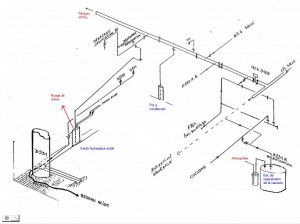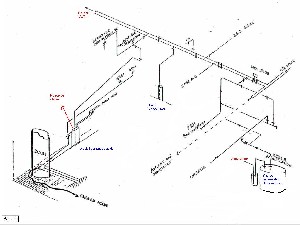Inside a chemical plant, 2 kg of chlorine were released into the atmosphere from a liquid trap that initially contained 98% sulphuric acid. The facility’s internal emergency plan was activated. Notified by the operator, the railway station, located 200 m away, delayed a train’s arrival by 50 min. Fire-fighters responded by laying a foam covering that allowed ending the alarm situation 30 min after being triggered. This accident was due to an unanticipated air intake into the regeneration tank for brine (stemming from mercury electrolytic cells), following an insufficient water level in the protective liquid trap. The induced pressure fluctuations tripped both the tank’s high pressure alarm and installation safety precautions. The tank vent was then automatically connected to the bleach network to collect all residual chlorine effluent. One hour after this initial incident, a pressure rise on the chlorine collectors of the electrolytic cells led to successive load decreases until reaching full production shutdown. A large quantity of chlorinated water was thus injected into the bleach network: the start-up of fans strictly used to quickly degas the electrolytic cells caused a sudden peak flow into the network, which also impeded the discharge of chlorine condensate via the collectors. On this network, a jar normally intended to collect condensate could not fully perform its function given a tap clogged by chlorine hydrate deposits (resulting from condensation). The excess chlorine condensate was removed by a trap located in the drying room containing 98% sulphuric acid. The exothermic water/acid mix favoured the vaporization of residual chlorine, which spread into the workshop and vicinity. To reduce the probability such an accident would recur, several measures were adopted, namely: the operator verified continuity of the liquid trap supply on the regeneration tank; the taps on the condensate collection jar and associated pipes were cleaned; the jar containing the acid (no longer required due to a previous modification) was removed; and shutdown procedure reminders were issued to all plant personnel.
Download the detailed report in .pdf format (101 Kb)





